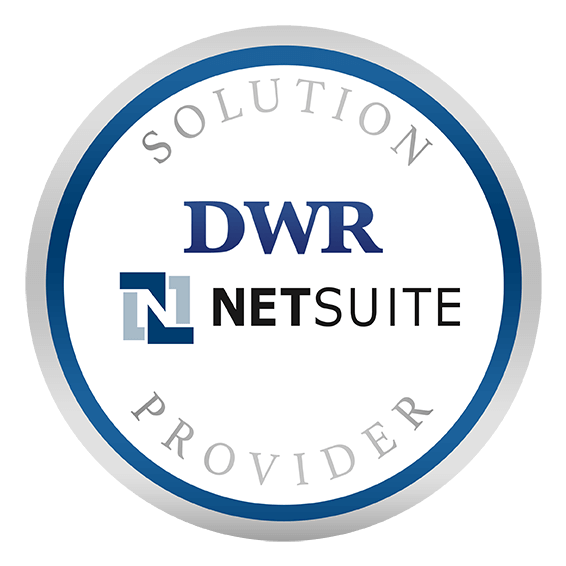How to Choose the Right ERP Software System
By Nigel | January 20th, 2017

If your organisation has outgrown its ERP software, then you’re probably already thinking about implementing a new system. Given it’s a major process that requires substantial investment in time and capital, as well as a long-term commitment, you’ll want to choose carefully and make sure you end up with an ERP platform that matches your organisation’s requirements. The best possible outcome if you choose smart, is that you have an ERP that supports all your organisation’s functions and allows you to increase efficiency significantly.
1. Define current and future requirements (Not Solution)
The most important first step in choosing a new ERP system – one which you should take before you start researching vendors – is to assess your current and future requirements. You need to align these to your company objectives and your organisational function areas. This might be a formal process involving a number of people from relevant function areas, but it’s important to take this step in detail so you can achieve a good match with your current and future needs when it comes time to settle on an option.
One challenge we consistently come across is that the requirements are often developed in terms of solution instead of requirements. Often this thought pattern arises because an organisation is extremely wedded to the current “solution”. We often recommend that organisations identify the “good” components of the current solution and breakdown requirements that are actually required – not a like for like comparison, but identify the process that is taking place (not so much its actual steps).
Current requirements
Define what your current requirements are and assess how well they’re being met by your current ERP system, if you’re using one. For example, you might have a strong inventory management processes that you can build around. Outline any pain points you currently have, along with any strengths in your processes.
Future requirements
Outline what your future requirements are likely to be given your organisation’s strategic objectives. These might be efficiency goals, speed-to-market goals, and better accounting processes. Ask what you need out of an ERP system to achieve these objectives. Define the actual functionalities and features, including specific business processes and system requirements. The more specific you are, the easier it will be to let vendors know what you’re looking for.
Functional areas
Your functional areas can encompass accounting and financials, human capital or resource management, manufacturing and distribution, materials management, research and development, sales and inventory management, and supply chain management. It can also include customer service management, integration capabilities, and support. List the features and tools that each functional area might need.
2. Define the evaluation process

If you’re a large organisation, it’s vital to define who the key decision-makers will be and outline how you’ll be evaluating your ERP options. Collectively, the decision-makers need to understand each functional area and the required features in a new ERP. They need to be able to assess how well the proposed options actually align with the company’s overall and specific goals.
The decision-making team should undertake a formal process of review and analysis to evaluate the best option. This includes the first step of defining current and future requirements, communicating with vendors, and assessing how well ERP platforms match with requirements. You might want to have a formal time frame for the evaluation process to ensure you complete the evaluation with a specific time period and to avoid the process dragging out.
If you are a mid-sized organisation, then the capacity to get bogged down in data and evaluations is very real. Set up sessions with key people to explain the process, and clearly articulate that feedback is essential. Also bear in mind that the Project Sponsor or Key Decision maker has a lot more importance in this scenario and will need to be able to sell their decision effectively.
3. Know What you are looking for
In our experience I see there are 2 types of business software approaches: a Product or a Solution.
A Product is where you sell out of the box applications that people can effectively plug and play. Eg MYOB, Xero, Waveapps etc. This product provides simple to use and can be run effectively out of the box wizard sign up etc
The second is the Solution, usually ERP, and traditionally markets to the top of SME’s and up. It addresses individual pain points and needs in the sales cycle. It is not plug and play, not wizard drive etc. It address your organisation’s pains and requirements.
A more in depth assessment of this can be read in our blog article Don’t Bring a Gun to a Knife Fight.
4. Budget

ERP software solutions can vary considerably when it comes to price. Work out what your budget is for your ERP requirements and check with vendors about how realistic your budget is given the level of functionality you require.
The sooner you can identify broad-brushed budget and an indicative cost of any ERP solution, the sooner you will be able to start to measure, assess, and balance out benefits against costs with some comfort.
Total cost of ownership
As you assess the ROI (Return On Investment) of an ERP systems, remember to factor in the total cost of ownership rather than simply the initial outlay. Costs will include obvious components implementation costs, configuration, training and migration, but may also include “downstream costs” such as monitoring usage, not only hardware but ERP software upgrades, downtime and so on.
5. Be specific when asking for demos
In today’s world any ERP software worth considering should have a dedicated Youtube or video demonstration distribution network (as long as you can put up with the twang of the the presenters). In addition to being specific when asking for a demonstration, ensure you come as educated as possible to the actual demonstration of the software.
A good flexible ERP solution will be able to take your specifics and not only deliver a demonstration that fits your requirements but enhance that so you can identify the true benefits of what the technology provides.
It is very difficult for almost any resource to reasonably use a “Demo” account of an ERP system without an instant frustration factor overcoming them. Please ensure that you take this into account.
6. Consider mobile usability (now and into the future)

If you have a mobile workforce or teams that work on mobile devices, make sure the ERP fully supports smartphones and tablets. Consider whether you need the full range of features to be available on mobile devices or just the core functionalities of your ERP system. Work with the actual users on your team and have them test the demo versions to ensure they’re happy with the way the platform works on their devices.
7. Ask for testimonials and references

If you’re in a specialised industry, it can help to ask partner organisations for recommendations, testimonials and references. This can simplify the review process and allow you to find out more about ERP systems that you might otherwise not have heard about.
At the same time, make sure you ask the ERP solution vendor for references and testimonials from their existing customers. If you have the opportunity to do so, speak to these customers directly and find out as much as you can about their experience in using the ERP platform. Ask them about strengths, limitations, and possible areas of improvement so you can learn from their experience.
8. Ensure you understand the concept of “Configuration” and “Customisation” in terms of each solution
All ERPs will need some sort of Configuration and or Customisation. The key is understanding what is configuration and what customisation means. Modern ERP platforms allow mid level organisation to configure much more than previously and have built in tools that means you are customising in the ERP solution not outside it. In short, with a modern platform the merging of Configuration and Customisation has accelerated.
I see the definition as if the change is made, built or developed within the application – not outside – and it uses the tools provided, then it is configuration not customisation. Addressing this carefully in your specific demo will considerably improve your understanding of this.
Older legacy systems allow customisation that may not be integrated with new version, and leave your version locked because a third party solution that you used to customise the solution cannot move to windows 10, etc.
9. Future scalability and technology
Technology moves rapidly today, so ensure you include a step for assessing future scalability and technology longevity in your evaluation process. Changing to another ERP incurs costs and most organisations would probably prefer not to do it often. If the ERP system is based on newer technology, you can probably achieve a much longer working life with it.
The technology stack is not only critical to the best fit approach for your organisation, but if it’s not addressed effectively it may well place an anchor around your organisation’s neck for years to come.
Thorough understanding of today’s terminology, eg. around the term “cloud”, in respect to ERP is critical. Never before have I seen a word that is means such different things to so many different people, depending on their perspective.
Choosing the right ERP
Choosing an ERP can be a complex process, especially if you’re a mid sized organisation up with numerous functional areas. It’s crucial to assess your goals and pain points so that you end up with an ERP platform that truly supports your organisation at all levels and functional areas. A poorly chosen ERP can incur unnecessary costs and hinder your organisation’s performance, while the right ERP can drive higher productivity, efficiency, and profitability.
For more information on how an ERP can assist your organisation, contact the experts at DWR today.
Nigel Wooden
Latest posts by Nigel Wooden (see all)
- ERP Software or Accounting Software: Which Is Better? - February 23, 2017
- Why B2B Features aren’t Right for B2C Processes - February 10, 2017
- How to Choose the Right ERP Software System - January 20, 2017












